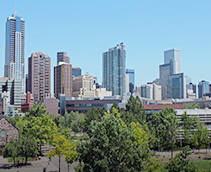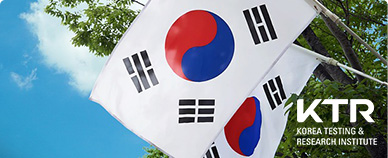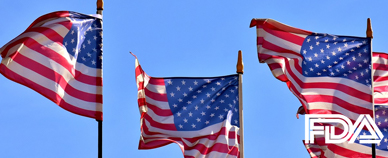United States GRAS certification consulting
Legal overview
In 1958, the United States introduced the "Food Additives Amendment". The Act stipulates that any food additive must be approved for safety by the FDA before it can be used. Since then, hundreds more have been listed “ Exception” The substance of... These substances are functionally food additives, but because “ High safety ” It is not regulated by the Act. Substances included in this list have either been “ Experts with sufficient scientific background ” The security reviews done are either “ No safety issues are considered after long-term use. . These substances are called “ Generally considered safe ” (Generally Recognized as Safe), GRAS for short.
GRAS is a standard used by the FDA to evaluate the safety of food additives. GRAS certified ingredients are considered safe when used under reasonable conditions and no special food additive certification is required.
How to apply
There are two different GRAS filing routes that can be used to obtain an application component to achieve GRAS status, with three main differences between the two different filing routes: cost, time, and public accessibility.
FDA-Notified GRAS
GRAS application process reviewed and notified by FDA. If a substance is considered to be “ GRAS” The FDA can provide “ No objection ” The document can be used for marketing purposes. This is a voluntary application programme that has been in place since 1997.
Expected time: 8-10 months (2 months for dossier preparation and 6-8 months for FDA response).
Public accessibility: Yes, FDA will release the dossier.
Self-Affirmed GRAS
The process by which companies or individuals self-identify as GRAS based on the conclusions of a panel of scientific experts. Companies or individuals are not required to consult the FDA, and the FDA is not required to accept the announcement of the conclusion. However, companies should ensure that their GRAS conclusions meet the criteria for GRAS in FDA's final Rule.
Schedule: 4-6 months (2 months for dossier preparation and 2-4 months for panel evaluation).
Public accessibility: voluntary not mandatory.
Cost: The fee of expert jury will be increased.
GRAS Application process
1. Fill out the FDA form
2. Prepare GRAS report, which is divided into about 6 parts, including:
① GRAS EXEMPTION CLAIM ② INTRODUCTION ③ CHEMISTRY&MANUFACTURING OF GLUCOSYLATED STEVIA ④ SELF-LIMITING LEVELS OF USE ⑤ REFERENCES ⑥ The full report takes approximately 50-60 pages to fully describe the safety and reliability of the product
3. Wait for FDA audit report
4. GRAS listing if FDA passes without objection
The services we provide
- GRAS Certification Consulting and Training
- GRAS Declaration
- FDA GRAS certification
Zhongbang is one of the earliest institutions in China to engage in compliance consulting services. It has a senior expert team composed of PhDs, Masters, and Bachelor's degrees, and has established branches in the UK, the United States, South Korea, Beijing, Shanghai, Suzhou, Fuzhou, Shenzhen, and other places, forming a global service network layout.
-
Strong technical strength:
A strong team composed of mid to senior technical personnel with professional backgrounds in chemistry, food nutrition and health, medicine, biology, toxicology, environment, and other fields
-
International service level:
A business elite team with multiple languages including English, Japanese, German, and Chinese, efficiently serving international customers
-
Rich compliance experience:
With years of experience in global product and regulatory research in multiple fields, we are able to provide comprehensive and high-level compliance consulting support to various customers
-
Localized service capabilities:
Having multiple branch offices in the UK, USA, South Korea, Beijing, Shanghai, Suzhou, Fuzhou, Shenzhen, etc., we can provide you with services nearby
Service Hotline :400-115-9001
Zhongbang Consulting (Shandong Zhongbang North Management Consulting Co., Ltd.) focuses on product registration and compliance consulting services. With its professional technology, diverse resources, and global network, we are committed to providing regulatory consulting and environmental regulation response services for pharmaceutical, chemical, consumer goods production enterprises, and large multinational corporations. To solve the environmental, health and safety laws and regulations, product quality standards, and other issues faced by enterprises in production, sales, and global trade processes.
Accumulated Customers
18,000+
Distributed in 35 countries and regions
14year
Industry experience
260+
Senior expert team
15+
Subsidiaries
300+
Collaboration Cases
Brand Cases
The choices and trust of over 18000 customers are the driving force for Zhongbang to continuously improve its services. We are willing to grow together with these excellent enterprises
Service Hotline:400-115-9001






































































 Consultation
Consultation
 400-115-9001
400-115-9001